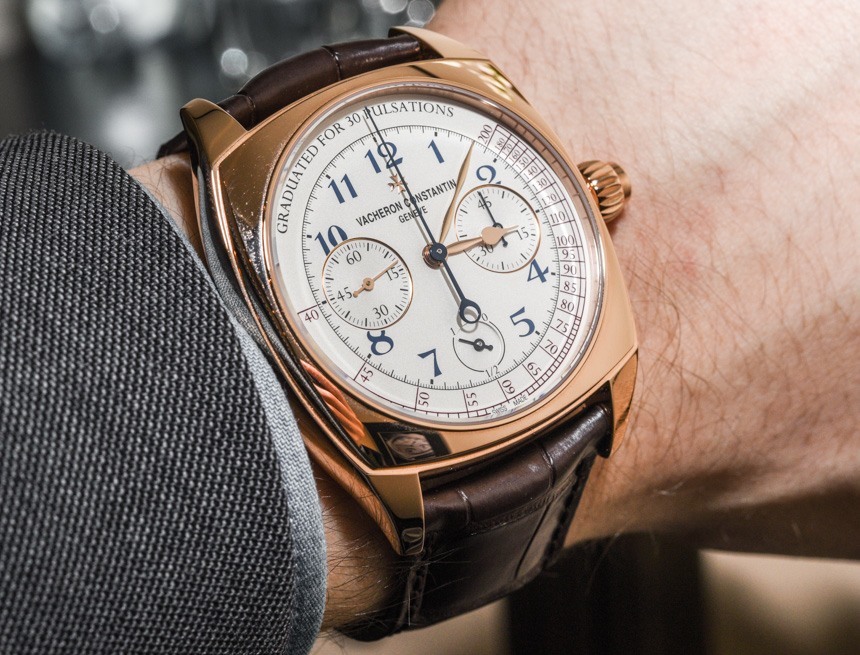
The tricky thing about revisiting a classic is that there is no formula for success. It’s not as simple as creating something totally new that has its inspiration in the past, nor does it necessarily pay dividends to update and refine the original with new techniques and technologies. Both ways can work; both ways can fail. By releasing the Vacheron Constantin Harmony Chronograph, the oldest continuously active watch company in the world has taken just such a risk.
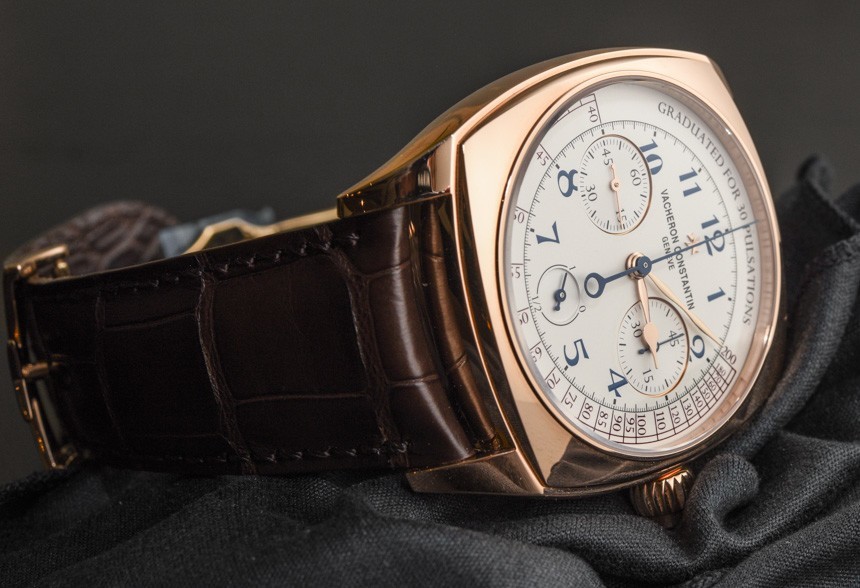
Based on their earliest chronographs from the 1920s, the Harmony model seeks to bring this seminal model up-to-date. It may look similar to the first edition, now almost 100 years old, but every single element has been looked at, worked on, and rethought – so much so that the Harmony collection actually is much more haute horlogerie than it is main collection, and both the quality of execution, as well as the price testify to that; but let’s not get ahead of ourselves. The resulting product is a harmonious blend of revered tradition and refined technique.
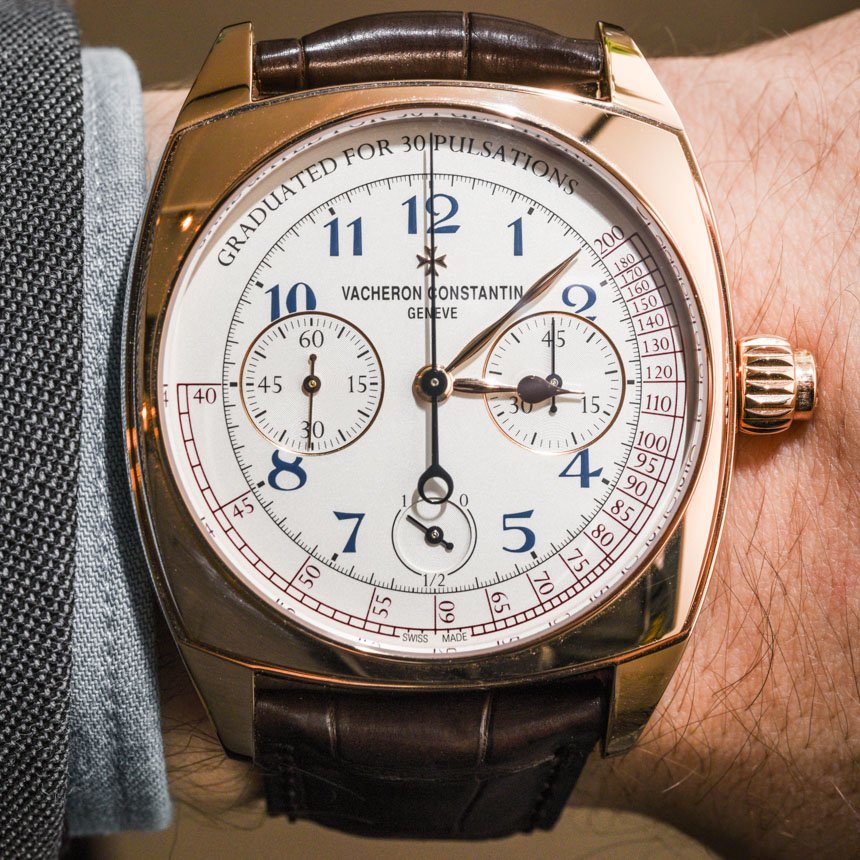
The cushion-shaped cases of early 20th century Vacheron Constantin watches have housed some of my most beloved timepieces. The iconic Vacheron Constantin Historiques American 1921 driving watch, re-imagined by the brand a few years ago, still haunts my dreams and mocks my attempts at designing a watch as simple and as captivating with every stroke of ink. But if you actually take the time to go back and study that watch and look at the case that I, like so many, extol, you will notice immediately how different the case of the new Vacheron Constantin Harmony Chronograph actually is.
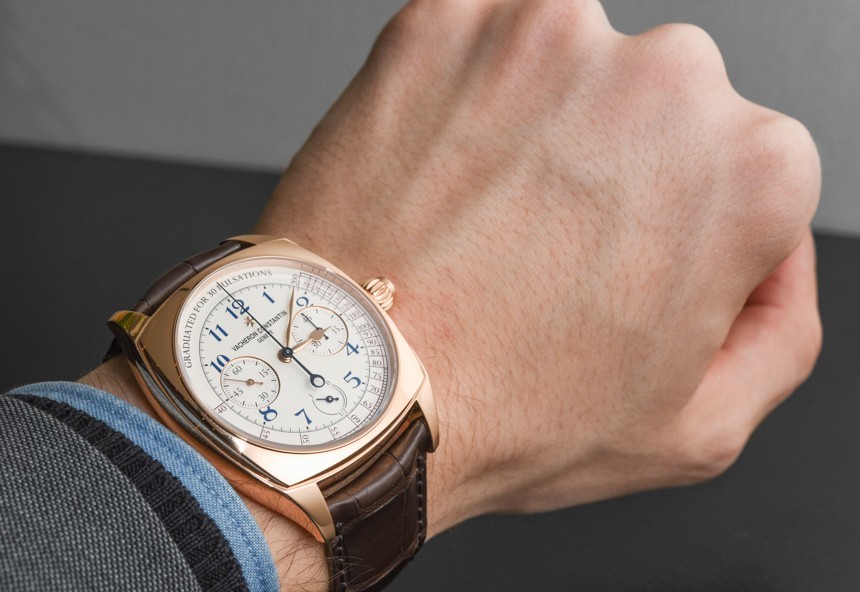
A traditional cushion case is a simple, straightforward way of increasing the visual interest of a single-piece case design. It’s basically a soft square – nothing too complicated at all! What Vacheron Constantin have done with this new wave of Harmony watches, released to celebrate 260 years of non-strop production, is to place the emphasis on sculpture, to draw our attention to the many shapes within shapes that can be seen on this watch. The case looks small and slim, but it is in fact a mid-size piece, sufficient for packing a serious mechanical punch. This is just as well, as the nuts and bolts of the Vacheron Constantin Harmony Chronograph are far from simple.
The sapphire crystal, treated with an anti-reflective coating, is round; the bezel is square; the case is curved to pull the harsher edges of the bezel into itself and to hug the wrist of the wearer. The dial displays the time and chronograph seconds in the center, running seconds at 9, chronograph minutes at 3, and a power reserve indicator at 6. On the periphery of the dial is a “pulsometer” scale rendering the Vacheron Constantin Harmony Chronograph a “doctor’s chronograph.”
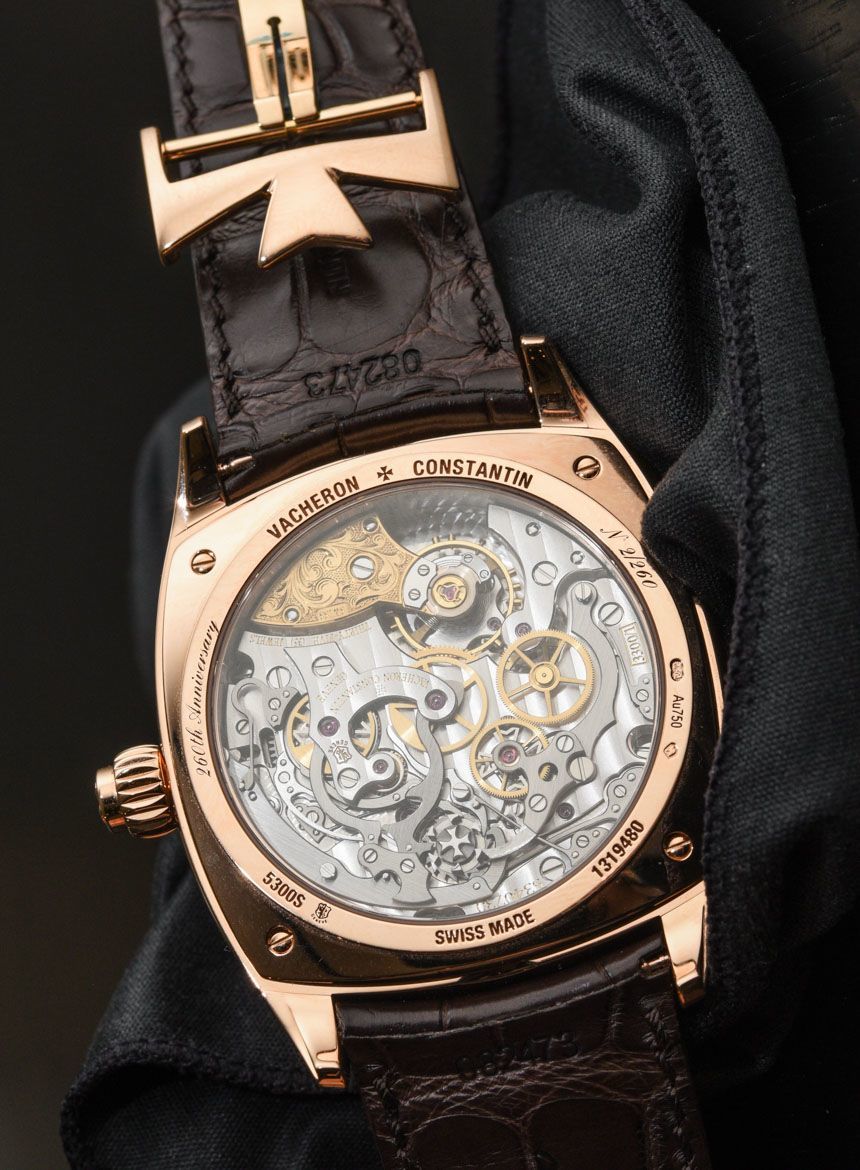
This manual wind, pulsometer chronograph utilises the calibre 3300, which is directly inspired by the 1928 model. Vacheron Constantin have made the wise (almost no-brainer) decision to retain the column wheel as the control component of the chronograph, but have made several other improvements in areas such as materials, precision, functionality, aesthetics, and user-friendliness, all of which are made possible by modern technology.
The movement is, of course, amazing to look at (and the emblazoned Geneva Seal, well earned), but the benefits of computer aided design are probably easiest to appreciate by studying the overlapping angles of the case. Manufacturing to this level of precision was simply not a workable goal a century ago. It is likely that minds accomplished enough to conceive such a construction were in existence, but to produce a multi-part housing with the requisite accuracy to achieve a functional level of water resistance was, I’m sure, an ambition too far.
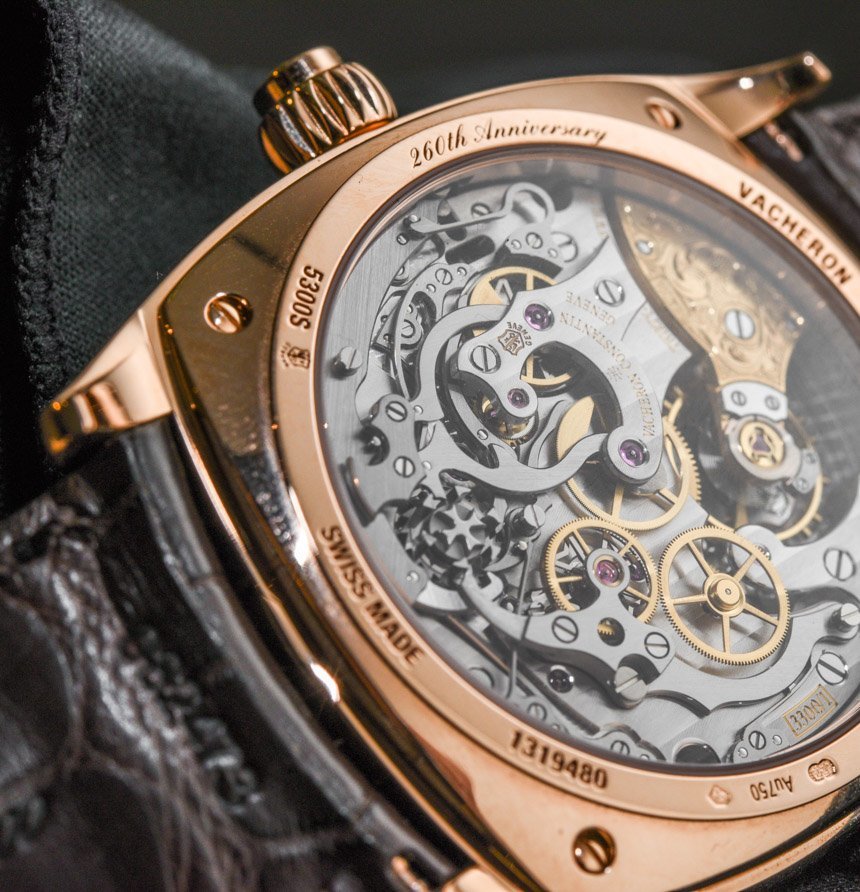
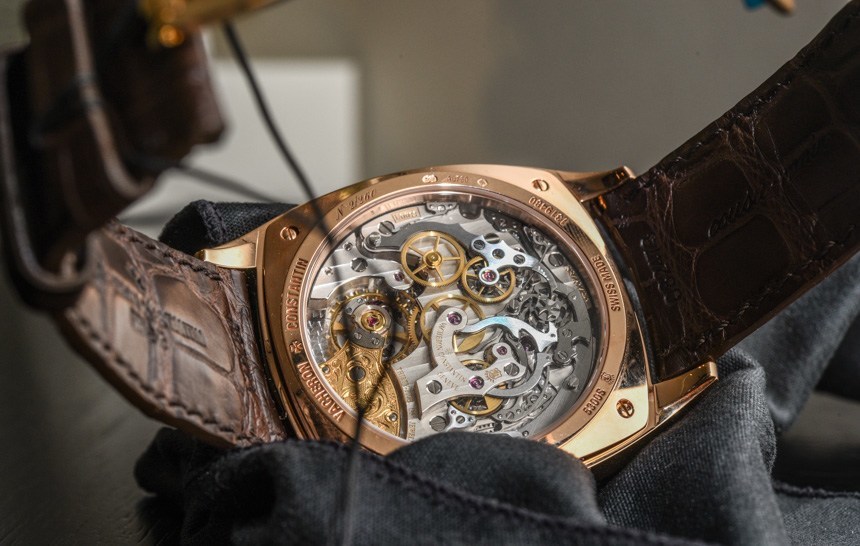
There are plenty who will prefer the aesthetic of a twin-pusher set-up, flanking a basic winding crown, but for fans of monopushers, this one’s a treat. Not only is it functionally superb (upon actuation, the column wheel is smooth as butter as opposed to the clunky feel of a cam), it is excellently rendered. As one might expect, I am something of a watch geek and cannot deny the strange happiness I feel in my belly when something is so well-made it looks almost like it was never made at all. By that, I mean it seems incomprehensible anything brutal enough to cut or form metal has ever come close to a component of this quality. In all honesty, as much as I would love to wear one of these watches, and as much as I’d surely delight in using the chronograph, I would be a little scared to touch it in case I put a huge scratch in the 18ct gold from which the Vacheron Constantin Harmony Chronograph is hewn.
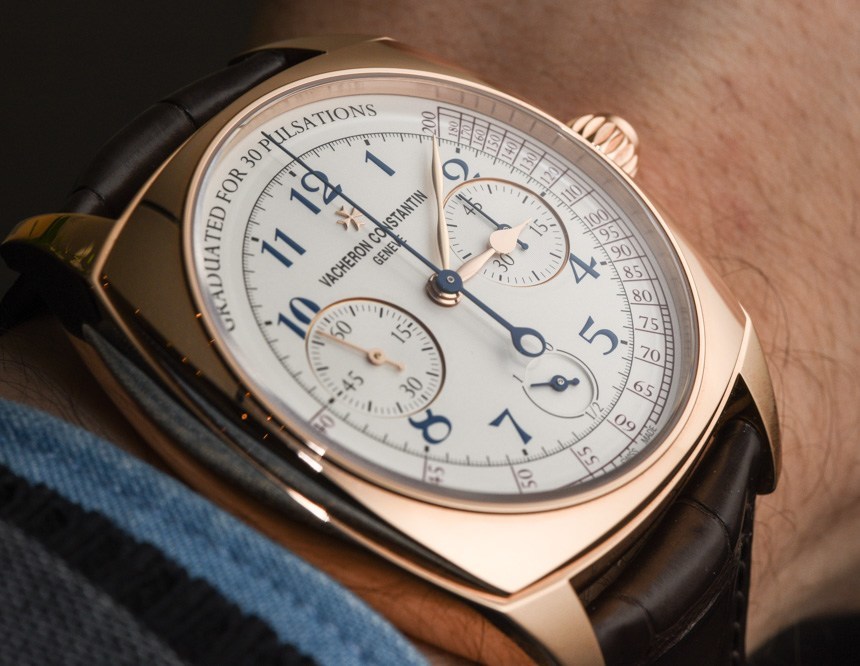
That said, I know I would get over it if I were to wear one every day; which, perhaps surprisingly, you could totally manage – given your choice of daily attire is of the more formal sort. As hefty as its price tag may be, this Vacheron Constantin Harmony Chronograph, like basically all the watches in the Harmony range, looks like it was designed to be worn. There is a great sense of balance to the case design, but its beauty is by no means skin deep.

